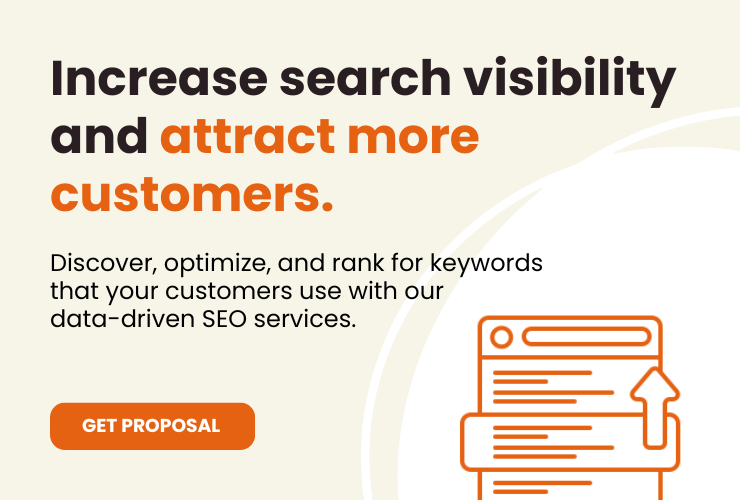Designing a website encouraging people to take action is essential for online success. Understanding how users behave, creating interesting content, using effective design elements, implementing strategies focused on conversion, and optimizing for mobile devices can increase the chances of turning visitors into customers.
Key Takeaways
- Understanding how users behave is crucial for website success.
- Compelling content and engaging design elements can attract and retain visitors.
- Conversion-focused strategies help in turning visitors into customers.
- Mobile optimization is essential for reaching users on smartphones and tablets.
- SEO techniques can improve website visibility and attract targeted traffic.
Overview
Understanding User Behavior
Understanding user behavior on a website is crucial for improving its performance. By analyzing how users interact with the site—such as where they click, how long they stay on a page, and what actions they take—we can identify areas needing enhancement and tailor the website to better meet their needs. Identifying user pain points, where users may get frustrated or confused, is another essential aspect, as addressing these pain points can create a smoother user journey.
Interestingly, 53% of shoppers say they always do research before making a purchase to ensure they are making the best possible choice. This statistic underscores the importance of having a well-designed, informative, and user-friendly website. If potential customers find your website difficult to navigate or lacking in essential information, they may quickly turn to competitors.
Optimizing user experience involves making the website easy to navigate, visually appealing, and responsive to different devices. Whether the site belongs to a small business or a large corporation, ensuring that users have a pleasant and seamless interaction is key to driving engagement and conversions. By focusing on these elements, businesses can better capture and retain the interest of discerning shoppers, ultimately leading to increased success.
Creating Compelling Content
Crafting persuasive text is crucial for engaging website visitors. Visual storytelling techniques can captivate users and enhance their experience. Engaging call-to-actions prompts users to take desired actions on the site. Compelling content is the key to keeping users interested and converting them into customers. Utilizing these strategies can significantly improve website performance and user engagement.
Effective Design Elements
When designing a website, it is crucial to consider Responsive Design Principles to ensure that the site adapts well to different devices. Understanding Color Psychology can help in choosing colors that evoke specific emotions in visitors. Typography plays a significant role in readability, making it easier for users to consume content. Utilizing these design elements effectively can enhance the overall user experience and increase the likelihood of conversion. Remember, a well-designed website is like a well-organized bookshelf – it attracts and engages visitors.
Conversion-Focused Strategies
Conversion-focused strategies are essential for boosting website performance and increasing user engagement. These strategies involve testing different elements to optimize the website for better results. Utilizing social proof is a powerful way to build trust with visitors and encourage them to take action. Streamlining the conversion funnel helps guide users through the website smoothly, leading to higher conversion rates. A/B testing is a valuable technique for identifying what works best and making data-driven decisions. Simplifying the process can lead to significant improvements in conversion rates. Implementing these strategies can have a significant impact on the success of a website.
Mobile Optimization Techniques
Mobile optimization techniques are crucial for ensuring that a website is user-friendly and performs well on mobile devices. One key aspect of mobile optimization is site speed, which refers to how quickly a website loads on a mobile device. Optimizing site speed involves various strategies such as optimizing images, enabling browser caching, implementing lazy loading, minimizing HTTP requests, and using accelerated mobile pages (AMP). These techniques help improve the overall performance of a website on mobile devices and enhance the user experience.
Additionally, a mobile-first design approach is essential for creating websites that are optimized for mobile users. This approach involves designing the website first for mobile devices and then scaling up to larger screens, ensuring that the user experience is seamless across all devices. Page speed optimization is another critical aspect of mobile optimization. It involves optimizing the loading speed of web pages to reduce bounce rates and improve user engagement. Mobile-friendly navigation is also important for ensuring that users can easily navigate a website on their mobile devices. By implementing clear and intuitive navigation menus, users can quickly find the information they are looking for, leading to a better overall user experience.
SEO for Conversion Rate
Search Engine Optimization (SEO) is crucial in increasing the number of visitors who take a desired action on a website. Understanding how SEO impacts conversion rates is essential for online success. When it comes to SEO for conversion rate, there are several key strategies to consider:
- Keyword Research: Identifying and targeting keywords that are relevant to your audience and have a high conversion potential.
- On-Page SEO: Optimizing title tags, meta descriptions, and content to improve search engine rankings and user experience.
- Technical SEO: Ensuring your website is technically sound, with fast load times, secure connections (HTTPS), and mobile-friendly design.
- Content Marketing: Creating valuable, keyword-rich content that attracts and engages your target audience.
- Link Building: Acquiring high-quality backlinks from reputable websites to improve your site’s authority and search engine rankings.
Check this out: Technical SEO vs On Page SEO: Which is More Important?
Conclusion
In conclusion, creating a website that effectively persuades visitors to take action is crucial for online success. You can increase conversion rates and achieve your business goals by focusing on user experience, clear messaging, and compelling visuals. Remember, simplicity is key when designing a website that converts. Test and optimize your site regularly to ensure it continues to engage and convert visitors. With these strategies in mind, you can create a website that looks great and drives results.
Frequently Asked Questions
What is user behavior analysis?
User behavior analysis is about studying how people interact with a website.
Why is it important to identify user pain points?
Identifying user pain points helps in understanding what frustrates users on a website.
How can user experience be improved?
User experience can be improved by making the website more user-friendly and easy to navigate.
What is persuasive copywriting?
Persuasive copywriting involves writing content that convinces visitors to take action.
How does color psychology impact web design?
Color psychology in web design influences how users perceive and react to a website’s color scheme.
What is A/B testing for website optimization?
A/B testing is a method used to compare two versions of a webpage to see which one performs better in terms of conversions.
Contact us Today!
Are you ready to adapt to search behaviors to ensure customers can find information about your company using search engines? Are you ready to explore the latest trends in SEO and digital marketing?
Sachs Marketing Group is a full-service digital marketing agency that can help spearhead your AEO efforts within your overall SEO strategy.
Contact us today to learn how we can help your business adapt and grow!
Contact us today to get the conversation started!












